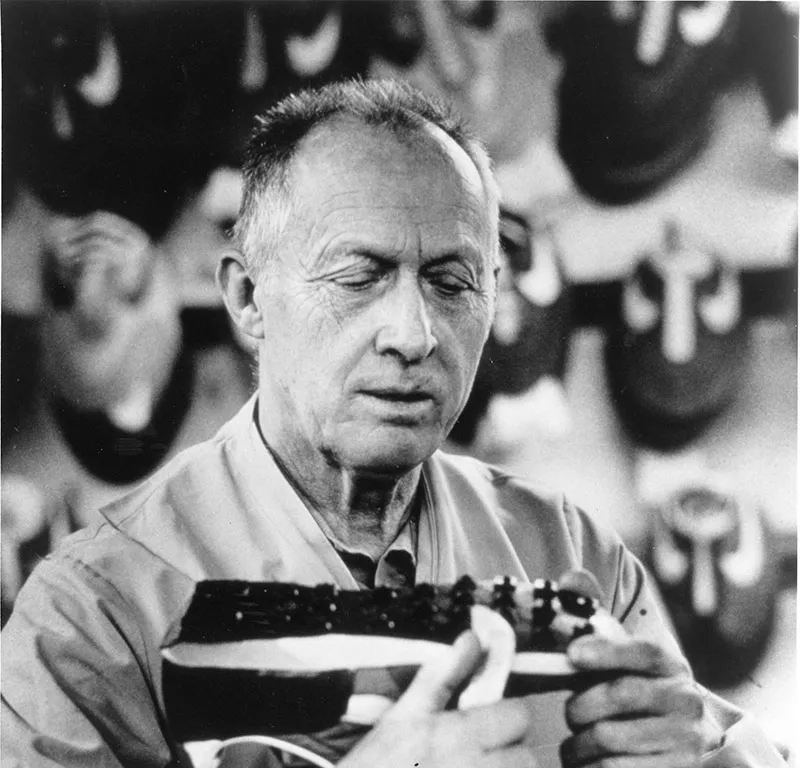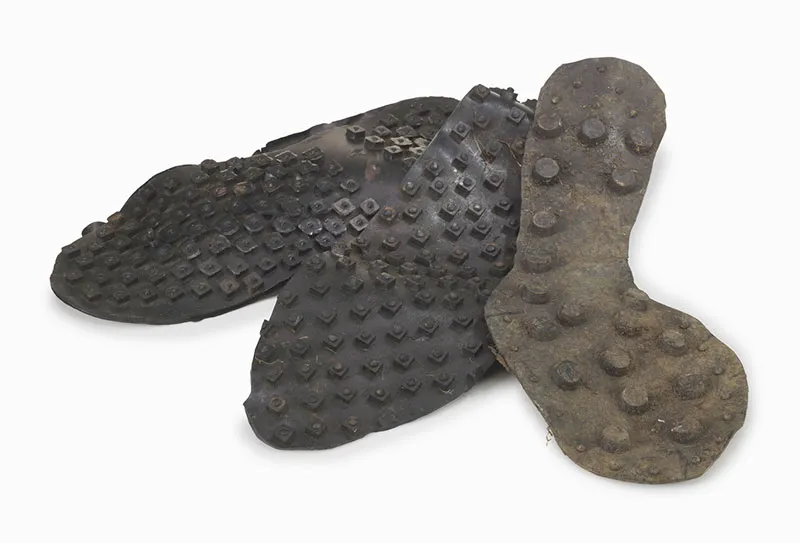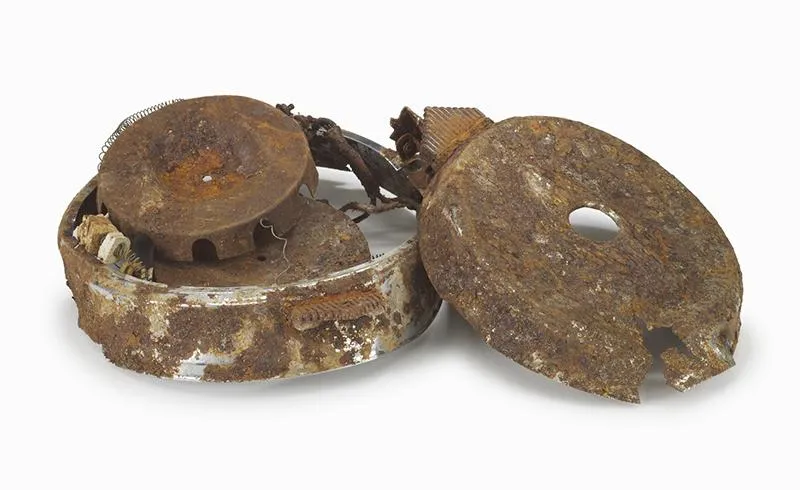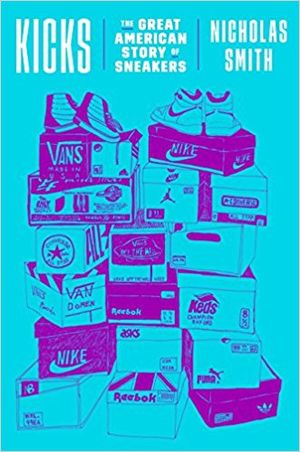A Brief History of America’s Obsession With Sneakers
Invented for athletics, sneakers eventually became status symbols and an integral part of street style
/https://tf-cmsv2-smithsonianmag-media.s3.amazonaws.com/filer/00/b1/00b1f7df-cedc-4975-a5e3-eefd5836b4d4/reebok.jpg)
The way Bill Bowerman told the story, one of Nike’s greatest innovations came to him at breakfast. The University of Oregon track coach, who meticulously crafted custom shoes for each of his athletes, had been struggling to develop a shoe that the team could wear to train on surfaces other than the track. His “eureka” moment came while eating waffles with his wife on a summer Sunday in 1971, when it occurred to him that the grooves of the waffle iron were a perfect mold for the multi-terrain soles he envisioned. He poured molten rubber into iron after iron until he perfected the waffle sole pattern that Nike, which he cofounded in 1964, continues to use on some running and training shoes today.
According to Nicholas Smith, author of the new book Kicks: The Great American Story of Sneakers, the whimsy of the waffle-iron shoes became the “big Nike legend.” One of Bowerman’s original waffle irons can even be found at Nike headquarters in Beaverton, Oregon today. But to Smith, the waffle iron experiment may say even more about Bowerman himself than his brand.
“[Bowerman had] this kind of obsessiveness about what to many people probably is sort of an insignificant object,” says Smith. “He would meticulously test on his athletes what was working in his shoe, and what wasn’t working…. When he saw that waffle pattern, that shape, he said, ‘Aha, these little square cube things that go on the shoe will provide the most grip.’”

But it’s this kind of dedicated tinkering and entrepreneurship that pervades the history of sneakers altogether. According to Smith’s research, sneakers as we know them may never have existed without Charles Goodyear’s serendipitous invention of vulcanized rubber in 1839. Despite his poor business sense that landed him repeatedly in debtor’s prison, the inventor saw an opportunity for technological advancement when he purchased hundreds of rubber life preservers in 1834 that had melted in the New York City summer heat. After years of fruitless experimentation, Goodyear finally happened upon the combination of lead, sulfur and heat that would allow the rubber to keep its shape.
“Charles Goodyear and Bill Bowerman were cut from the same mold. They were both obsessive basement inventors that would tinker with something until it worked,” says Smith. “[Goodyear] had more error than trial trying to find the right concoction that would make vulcanized rubber, but once he had it, it was a complete game-changing material for the Industrial Revolution.”
Goodyear’s invention of heat-withstanding rubber soon found an application: functional shoes for organized sports. Smith writes that the first rubber-soled sneaker was made in the 1860s for croquet, where the potential for grass stains and damage to the lawn necessitated a shoe with a durable, yet flexible sole. The croquet trend turned into a tennis craze among elite men and women, who created a market for fashionable and functional sports shoes. As more people took to spending their leisure time playing sports, it became clear that their usual leather dress shoes simply would not hold up.

In the decades that followed, the leisurely privilege of the upper class saw a gradual democratization. The advent of basketball in 1891, for example, had students and YMCA members quickly hooked. Chuck Taylor, a semi-professional basketball player himself, cornered early court shoe demand for decades with his canvas and rubber All Stars, which he personally hawked at high schools around the country. Basketball eventually took hold both with professional athletes in world-class arenas and with adolescents on inner-city blacktops. The allure of athletics reached even farther as running began to trend in the 1970s and Farrah Fawcett-inspired aerobics took off, solidifying the idea that anyone could be an athlete.
Smith emphasizes the especially inclusive effect that the jogging and aerobics boom had on the sneaker market. “This is when people started to discover that exercise and fitness could also be a form of leisure and fun,” he says. “You saw magazines like People with provocative titles like, ‘Everyone’s Doing It.’ Time magazine and Newsweek featured people jogging and doing aerobics, holding up pictures of their old, less fit selves…. It was the first time in history when ordinary people were doing these things.”
As sports fanaticism permeated American culture, it behooved shoe companies to appeal to diverse, newfound pockets of the market, which often meant letting go of antiquated biases. In the late ‘70s, as members of the NBA’s inner circle voiced narrow-minded concerns about the difficulty of “[selling] a black sport to a white public” (as one told Sports Illustrated in 1979), Nike took a big financial gamble in signing the ascendant Michael Jordan, working with him to create the enduring sensation of Air Jordan sneakers. Reebok, for their part, made a killing with their Blacktops after they discovered the market for sturdier street basketball shoes in the inner cities of the 1990s. Reebok uncovered niches off the basketball court as well—astutely marketing their slim, pliable Freestyle shoes to the female-dominated workout market in the 1980s at a time when Nike execs declined to serve that clientele. Though Nike eventually recognized the opportunity to cater to aerobics fans, their bias let them get beaten to the market; they had fallen behind Reebok in overall sales by 1987.

Through the expanding sports scene, sneakers had assumed their position on the vanguard of popular culture. As such, those who were critical of the changes they saw in their society often blamed sneakers for the “problems” of modernity. Early hip-hop icons frequently rapped about their shoes – Run DMC’s song “My Adidas” even won them a sponsorship by the brand – but their style often stirred up controversy. Run DMC was especially denounced for wearing their shoes without laces, a street style trend of the era that some believed was reminiscent of prison culture, since inmates were not allowed to own shoelaces lest they turn them into weapons.
“Some people saw this trend and said, ‘Look, this is a sign of the culture going down, that people are mimicking styles of people in prison,’” says Smith. “But Run DMC was famous for wearing their white and black Adidas Superstar shell-toe shoes, without their laces of course. They came along and said ‘Wait a minute, these aren’t felons’ shoes, these are a symbol of empowerment. We’re proud of the way we look, and we’re reflecting how we see everyone else around us dressed.’”
Unfortunately, some concerns about sneakers were warranted. As the rates of homicides and other violent crimes rose in the United States throughout the late 1980s and into the 1990s, it appeared to many that sneakers were a status symbol that often set off hostile encounters. In a particularly appalling case, prosecutors believed that the 1989 murder of 15-year-old Michael Eugene Thomas Where? was a grisly attempt to steal his Air Jordans. A 1990 Sports Illustrated cover read “Your Sneakers or your Life,” and the story detailed a rash of purportedly sneaker-related crimes.
“Did sneakers cause all this violence? Of course not,” Smith says. “It was something that people picked up on that was new and wanted to assign a little bit more reason as to why these things were happening.”
Even amidst controversy, the cultural presence of sneakers flourished. As MJ’s electric performance on the Chicago Bulls made the first Air Jordans practically sell themselves, Nike tried to transition the shoe from the basketball court to the world of high fashion and popular culture. The Air Jordan II, which featured a tag that said “Made in Italy” and an unprecedented $100 price tag when it was released in 1986, ushered in a new era for sneakers—they became embedded in the “streetwear” trend that merged hip-hop, athletic gear and designer clothes. Collaborations between sneaker brands and artists produced limited edition lines clamored over by new “sneakerheads.” Customers famously camped outside a Manhattan shoe boutique in 2005 for days during a snowstorm to get their hands on the “Pigeon Dunk,” a limited edition produced by Nike and designer Jeff Staple that featured a pigeon on the heel in homage to New York City. Only 150 Pigeon Dunks were made—the kicks are listed online today for as much as $10,000.
In the digital age, sneakerheads have used sites like eBay to create a secondary market for limited-edition designer sneakers that some estimate to be worth $6 billion globally. Even those who don’t spend thousands on these coveted pairs have had the chance to add to sneakers’ hype through social media, as viral videos like the 2014 “Damn, Daniel” series lightheartedly call attention to the slickest fashion statements.
Though 19th-century creators of croquet shoes would never have predicted today’s sneaker-style fanaticism, Smith believes that sneakers have carried a certain mystique beyond their utilitarian purpose since their invention. He highlights the 1989 Air Jordan ad campaign in which Nike explains the source of Michael Jordan’s talent—“it’s gotta be the shoes,” as a pivotal moment in modern sneaker history with deep historical roots.
“What these commercials tapped into is a much, much older idea. What makes Cinderella a princess? The magic glass slipper. What makes Dorothy come back from the land of Oz? The ruby slippers,” says Smith. “I was a kid when these commercials came out. Of course, I wanted these shoes. I was convinced they would make me jump higher. I didn’t know how, and I didn’t know why, but there was something there that spoke to that old feeling of the magical shoe.”


